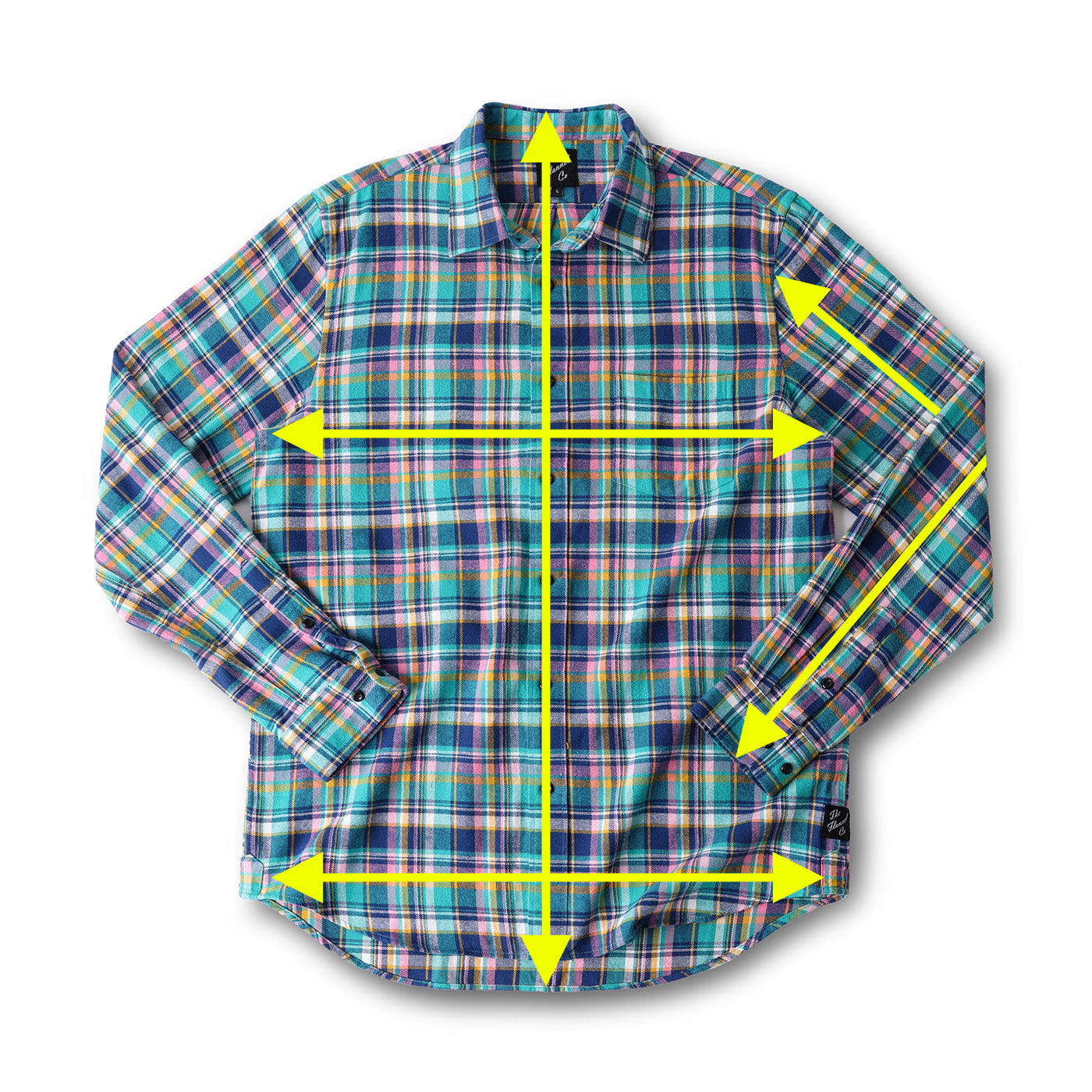
Let's dive into some detail shall we...
When it comes to wardrobe staples, few garments rival the timeless appeal of cotton and flannel shirts. Known for their comfort, versatility, and classic style, these shirts have been wardrobe essentials for decades. But what makes them so popular, and how do they differ? In this blog, we’ll dive into the unique qualities of cotton and flannel shirts, explore their history, and offer tips on how to style them.
A Brief History of Cotton Shirts
Cotton, a natural fiber derived from the cotton plant, has been used in textiles for thousands of years. Archaeological evidence suggests that cotton fabric was used in ancient Egypt, India, and Peru as early as 5,000 years ago. Over time, cotton became a preferred fabric in many cultures due to its durability, breathability, and comfort.
By the 19th century, cotton shirts had become widely popular across Europe and America. From formal dress shirts to casual T-shirts, cotton has been a staple in men’s and women’s wardrobes ever since. Today, it remains one of the most popular fabrics in the world due to its softness, hypoallergenic properties, and versatility.
What is Flannel?
Flannel is not a fabric itself but rather a type of weave, typically made from cotton, wool, or synthetic fibers. The fabric is brushed on one or both sides to create a soft, fuzzy texture. Originally, flannel was made from wool and was first developed in Wales in the 17th century as a warm, durable fabric to withstand harsh climates. Over time, cotton became a popular choice for flannel, providing the same warmth and softness but with increased breathability.
Flannel shirts, often recognized by their iconic plaid patterns, gained popularity in the early 20th century as practical workwear for laborers, farmers, and outdoorsmen. The fabric’s warmth and durability made it ideal for people working in cold environments. Today, flannel shirts are embraced for their nostalgic appeal and cozy comfort, and they remain a timeless fashion statement across cultures and seasons.
Key Differences Between Cotton and Flannel Shirts
While cotton and flannel shirts share many similarities, there are some key differences to consider:
-
Fabric Type:
- Cotton is a natural fiber, used to make a variety of fabrics, from lightweight T-shirts to heavier twill shirts.
- Flannel, on the other hand, is a type of weave that can be made from cotton, wool, or synthetics and is defined by its soft, brushed surface.
-
Texture:
- Cotton shirts can be smooth or slightly textured, depending on the weave (e.g., Oxford, poplin, or twill).
- Flannel shirts are typically soft and fuzzy due to the brushing process, making them warmer and cozier.
-
Warmth:
- Cotton is breathable and ideal for warm or moderate climates.
- Flannel, especially when made from cotton, adds warmth and is perfect for cooler seasons and outdoor activities.
-
Appearance:
- Cotton shirts come in a wide variety of colors, patterns, and weaves, making them highly versatile.
- Flannel shirts are often associated with plaid or check patterns and have a more rugged, casual look.
The Benefits of Cotton and Flannel Shirts
Why Choose Cotton?
- Breathable and Lightweight: Cotton allows air to circulate, keeping you cool in warm weather.
- Hypoallergenic: Cotton is gentle on the skin, making it suitable for those with allergies or sensitive skin.
- Easy to Care For: Cotton is durable, machine-washable, and resists pilling.
Why Choose Flannel?
- Warmth and Comfort: The brushed surface of flannel provides insulation, making it ideal for cold weather.
- Softness: Flannel’s texture feels cozy and comfortable against the skin, perfect for layering.
- Durability: Flannel made from cotton or wool is long-lasting and can withstand rugged use.
Styling Cotton and Flannel Shirts
Cotton and flannel shirts are versatile and can be styled in a variety of ways, making them suitable for casual and semi-formal looks. Here are some tips on how to incorporate them into your wardrobe:
-
Cotton Shirts for Everyday Wear:
- Casual Look: Pair a cotton T-shirt or button-up with jeans or chinos for a comfortable, everyday look. Cotton shirts in neutral colors like white, grey, or navy are easy to mix and match with other wardrobe pieces.
- Business Casual: Opt for an Oxford or twill cotton shirt with a blazer and tailored pants for a polished look. Light blue or crisp white cotton shirts are office staples that can be dressed up or down.
-
Flannel Shirts for Cozy Style:
- Layered Look: Flannel shirts are perfect for layering. Wear a flannel over a plain T-shirt and pair it with jeans for a laid-back, rugged style. Roll up the sleeves for a relaxed, outdoor look.
- Smart-Casual: Dress up a flannel shirt by tucking it into dark jeans or chinos and adding leather boots. Look for flannel shirts in subtle colors if you prefer a more refined appearance.
- Winter Layering: In colder months, wear a flannel shirt under a sweater or a puffer jacket for extra warmth and a pop of pattern.
Caring for Cotton and Flannel Shirts
Proper care can extend the life of your cotton and flannel shirts, preserving their softness and color.
- Washing: Wash cotton shirts in cold water to prevent shrinkage and fading. For flannel, use a gentle cycle to protect the soft, brushed fibers.
- Drying: Air-dry cotton shirts to maintain their shape, or tumble dry on low heat. Flannel shirts are best air-dried to prevent pilling and maintain softness.
- Ironing and Storage: Cotton shirts can be ironed for a crisp look, while flannel shirts typically don’t require ironing unless you prefer a more polished finish. Store flannel shirts folded to avoid stretching.



